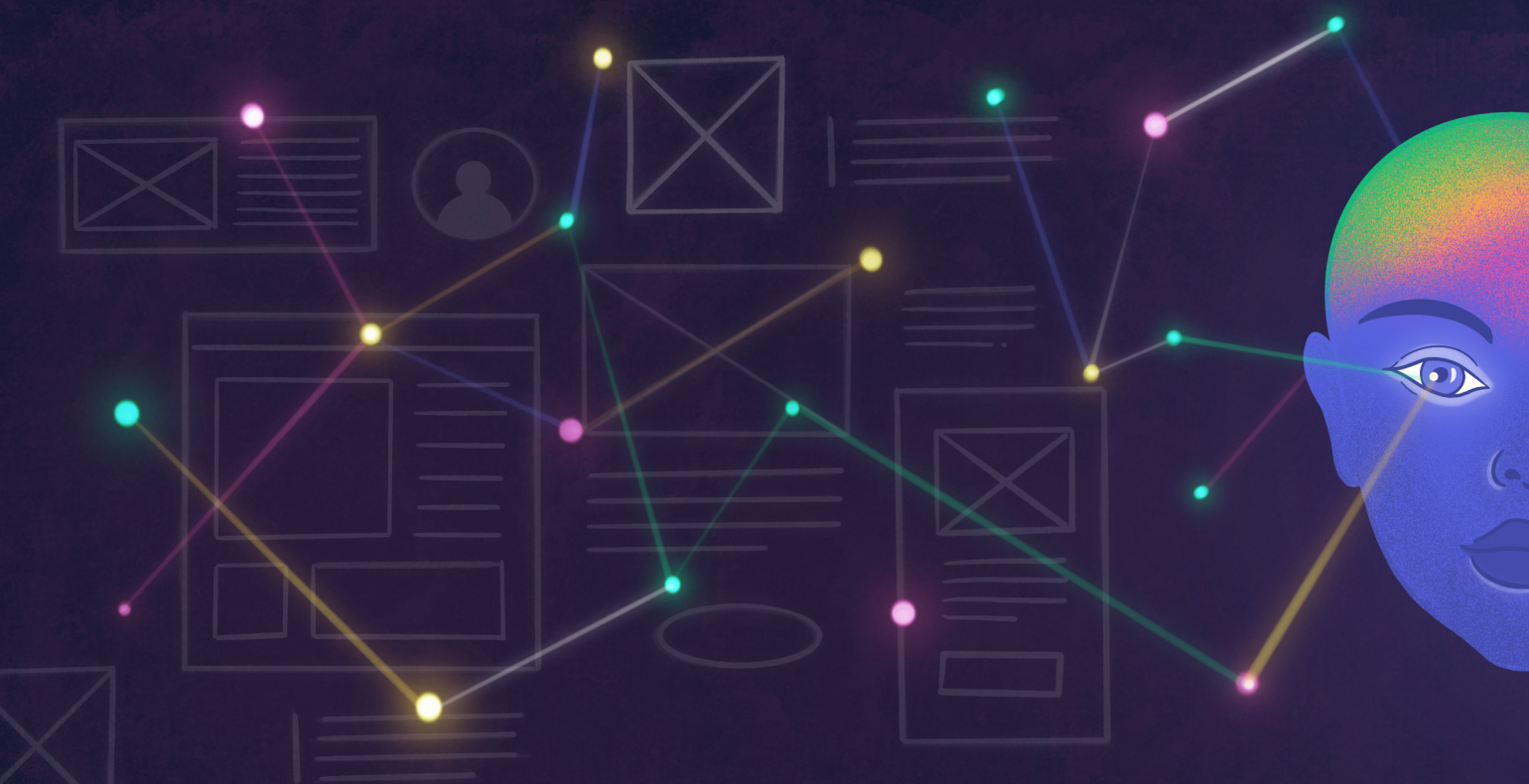We all have moods and feelings - how do we measure this in user tests?
Today's market situation can be quite confusing. There are more and more brands emerging in different sectors, offering a wide variety of digital solutions. This raises questions to many service providers; how can their product or service stand out from the competition? Is focusing solely on user experience enough to find and keep your users? In this post, we'll talk more about user testing and in particular, the importance of monitoring emotions and eye movement.
What does user testing mean?
User testing is one of the cornerstones of any user experience study. It provides valuable information in early stages of any new product or service development. It gives an overview about how the potential user relates to the prototype of the new product or service, how comfortable they are with it, whether they find a solution to their problem or get stuck. All this allows you to fine tune the concept way before writing the first line of code.
Deeper understanding of the user
The purpose of usability testing is thus to identify problems with the platform that is running. To do this, the user is given tasks that he / she has to solve on the prototype or website. For example, find a piece of information or a solution to a specific problem. As you pass the test, you can ask the user to think loudly and express what connections, questions, and thoughts they encounter as they perform the task. And that could give us a good enough sense of why the user decided to take certain actions or what was preventing him/ her.
But does it give a complete picture of what's going on in the user's head? We face new experiences in new situations. We do not know how to think in this particular situation, let alone what we should do in that situation. But we have a feeling. There is a widespread mantra in design that people say what they think but act on what they feel. When putting their feelings into words in a new situation, one must first translate that feeling into an understandable idea for themselves. Then the test taker, the UX researcher or the designer must understand it in the most accurate way possible. The risk of slipping is quite high. To understand what a person really feels, thinks or what really influences them, requires great listening skills as well as tactical empathy.
Eyes tracking
Relying solely on what a person says in the comments on his or her journey in the usability test will still not give the full picture of what he or she is thinking. However, it is undoubtedly better than not testing at all. In fact, without testing, developing a product or service would be extremely risky. We invest time and money there, which can all be meaningless if the result ultimately does not help the user. There is no point in producing digital garbage.
However, the eyes can give the user test a whole new meaning. As they say, the eye is the mirror of the soul. Eyes give a deeper understanding of the user's thought processes and behaviours. Eye tracking during testing allows UX designers and researchers to gain concealed knowledge not only what the test participant is looking at on the platform, but also of what he or she is thinking! Knowing where the user is looking at while using the application or web platform is, in turn, worth of gold for UI designers. This knowledge allows them to customize the working platform according to user’s behaviour already during the development process. It’s a win-win really :)
How are eyes tracked?
It is actually not a new technology at all. Psychologist Edmund Huey built a device for eye tracking already in the early 20th century. Today we use infrared technology, which measures the movement of a person's eye or its retention at different points on the screen. Eye tracking provides insight into subconscious movements in the human head, patterns of thought and behaviour, and helps identify usability failures that might otherwise be overshadowed. Adding eye tracking to a usability study helps you understand the following aspects:
- Whether there is something missing from the user interface, showing on a screen what people did not look at all;
- Which UI elements distract them;
- What are the problems with the page?
- Which content intrigues and which is unnecessary;
- How users meet their goals on the page.
This knowledge provides both the user research team and the customer with a deeper understanding of user behaviour patterns. This, in turn, allows you to ask even more personal questions and to formulate more precise hypotheses in the remainder of the study.
That feeling remains
Harald University professor Gerald Zaltman confirms in his book How Customers Think: Essential Insights into the Mind of the Market that what people think, or feel is often opposite to what they say. But why aren’t people honest and confident about their behaviour? Zaltman says that one of the root causes is that they are actually driven by subconscious urges, the strongest of which is emotion, which is what drives our behaviour as consumers, but also as people in society and decision making in general.
That being said, we as humans are not as logical as we think. Understanding this will not only be useful in product or service development, but will also clearly wave into areas around the product or service - marketing, branding, sales, etc. So, if you want a person to remember a product or service, you need to talk about their emotions. People are driven by emotions!
Thus, an important part of usability testing is understanding what a user feels when using a platform. The name of this research area is Neuro UX. It is the application of neuroscience techniques in user experience design. Neuroscience in general deals with brain and nervous system research, but neuroscience in symbiosis with user experience design allows us to test user emotions during usability testing and to provide input for the development of more user-friendly products and services. You know the user understanding gives a much richer and deeper knowledge of what's going on in his head when he uses the platform.
How to capture emotions from within?
This data is captured in two ways in parallel. You can monitor facial expressions and human mimicry and measure his brainwaves in parallel with ultrasound. Facial expressions are very eloquent and directly related to the human emotional world. Emotion researcher Paul Ekman thinks there is a certain amount of emotion that is qualitatively different - in terms of judgment, triggering events, behavioural responses, and physical experience. But he proved that different nations of the world, regardless of race, language, and cultural development, recognize at least six basic emotions, though there may be cultural differences in the way they are recognized - happiness, sadness, surprise, fear, anger and disgust.
Any researcher who, over the past 30 years, has tried to determine what emotions can be read from her facial expressions, has come to the conclusion that at least these 6 basic emotions are there.
We add brainwave analysis to the user test, which can measure emotions on a much larger scale. Then, as a result of the test, it draws out, in seconds, what emotions the user was experiencing during the use of the platform - which aroused pleasure, which did not, where attention became sharp and where it fell. What kind of emotions can be spelled out in this way is explained in the graph below.

James Russell's Circumplex Model of Emotion
For the best emotional response, it would be wise to target your user through many different senses. It's not just about ease of use or functionality here. For example, your logo, colours, designs, sound and video solutions, messages, vibrations etc. on phones. How do they make your users feel or think? This way of thinking is worth integrating into product development early on, so that the product team itself can better understand how engaging the solution is for the user and what emotions it can create for the user. This means that the product team must understand this dynamic on an equal footing with the user.
After all, one might ask why this is necessary at all? Isn't all of this a big waste of time?
No, it's not. Certainly, this is one way to make the world a better place step by step. However, let's just say that this is not a universal golden key to replace other UX research. Observing emotions and eye movement is a very valuable adjunct that significantly enriches other studies as needed.
References:
https://blog.twn.ee/et/mis-on-kasutatavus-kasutajakogemus-ja-kasutatavuse-inseneeria-ux-algajatele
https://medium.com/swlh/how-to-design-an-addicting-product-29b948c427de
https://blog.twn.ee/et/10-viga-mida-valtida-veebilehe-kasutatavuse-testi-ettevalmistamisel
https://www.cortexcopywriter.com/blog/UX-writing-and-FBI-negotiation.html
https://uxplanet.org/uxers-quick-guide-to-eye-tracking-edf70bffd03d
https://blog.twn.ee/et/neuro-ux_ehk_mida_ma_tegelikult_su_tootest_arvan
https://peaasi.ee/pohiemotsioonid/







